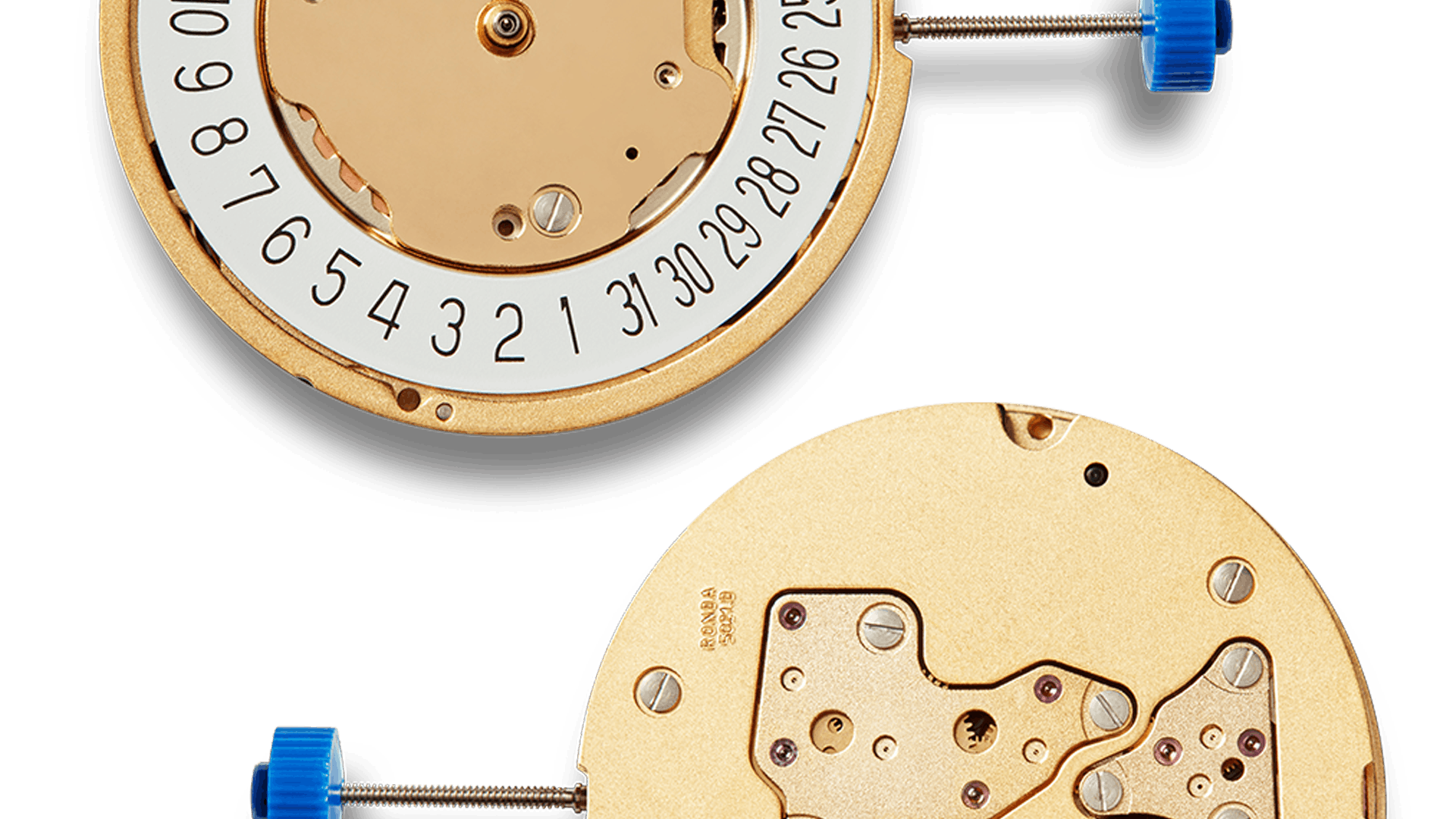The best quartz watches are known for their high-accuracy movement that drives the hours, minutes, and seconds with precision. If you’re in the market for a new watch, you won’t want to miss out on this evolution of time accuracy.
Let’s dive a little deeper into what makes a quartz watch tick, including its history, benefits and features, and how it works.
The History of Quartz Watches
If you’re anything of a watch nerd like us, you might remember when the concept of a quartz watch disrupted the status quo of the watch industry. But for those of you who haven’t quite hit your watch fanatic phase yet, here’s the TLDR of how quartz watches came about.
Automatic and mechanical watches (i.e. self-winding or manual winding watches) are still some of the most common watch movement types, but they used to be some of the only options. Watchmakers wanted to create a more accurate and energy-efficient watch than these winding movements. Enter the quartz watch. Quartz clocks have been around since 1927 when Warren Marrison and J. W. Horton at Bell Telephone Laboratories built the first one. Quartz watches, however, were first introduced in December 1969 by the Japanese watchmaker Seiko as the Astron watch. And finally, two years later Girard-Perregaux introduced the Caliber 350, which went on to set the standard for quartz oscillation.
But what exactly is the difference between winding watches and quartz watches? Let’s zoom in on what gives this type of watch its allure and precision.

How Does a Quartz Watch Work?
A quartz crystal is probably no stranger to most people. First found in the 1880s, quartz crystals have been a staple in rock shops, jewelry, and home decor for centuries. But you might not know that quartz contains piezoelectric properties, meaning it can produce a small volt of electricity, and that when this occurs, it naturally vibrates at an exact, constant frequency of 32,768 times per second. These properties enable quartz movement to have time accuracy at around 15 seconds a month or so – much better than even the best of the best mechanical watches.
Unlike winding watches that get their oscillating element from a spring and wheel, quartz watches get their regulating element from a tiny quartz crystal cut into a small tuning fork. Inside the watch, a battery provides a current to a microchip circuit, where because of its piezoelectric properties, the quartz’s oscillations occur at an almost perfect frequency of 32,778 times per second. These oscillations are then reduced in the microchip circuit to one electric pulse per second. The pulse drives the tiny motor and tiny gears in the watch to move the hour, minute, and seconds hands with extreme time precision.
The only bane to a quartz watch’s accuracy is temperature fluctuation. Changes in temperatures can subtly affect how many times quartz oscillates per second. However, over the years, there’s been even more innovation with the quartz watch movement, including a subcategory called High Accuracy Quartz (HAQ) to combat this slight accuracy threat. High-accuracy quartz watches operate the same way as a regular quartz watch except they also feature a thermo-compensated case that can detect changes in temperatures and adjust as needed. This gives HAQs a slight guaranteed accuracy edge over quartz watches at 10 seconds per year.
The Benefits of a Quartz Watch
While we love all watch movements in their own unique way, there is something to be said about the benefits of specifically owning a quartz watch.
Accuracy
As we’ve discussed, accuracy is a huge benefit to owning a quartz watch. Mechanical and automatic watches tend to average a guaranteed time accuracy of -4/+6 seconds per day. While this precision is still extremely accurate, it doesn’t quite compare to the accuracy of quartz at approximately 15 seconds per month or high accuracy quartz at 10 seconds per year. Time is precious, so you deserve a watch that reflects that.
Size
Have a small wrist or prefer smaller watch faces? Quartz watches are the answer. Because their parts don’t take up as much space inside a case as those in automatic or mechanical watches, quartz watches tend to be slimmer, smaller, and flatter. This opens the door for more unique watch designs that speak directly to you and your lifestyle.
Low Maintenance
If you’re looking for a watch you can always count on, look no further. Quartz watches require little to no maintenance once you set them and tend to have a longer lifespan than mechanical or automatic watches. Batteries can keep a power reserve going for years, which means even if you forget about your watch for 8 months (we don’t recommend it, but it happens), it’ll still be ticking away when you go to wear it again.
If you don’t have a quartz watch already or are looking for a new one, we recommend trying one on for size. We think you’ll love them and the benefits that come with them.
Shinola Quartz Watches
At Shinola, our high-accuracy quartz movement, The Argonite 1069, was the first movement we learned to build. Our quartz watches exude understated power and are hand-assembled in Detroit with Swiss watch and other imported parts to give you the ultimate time-telling experience. Browse our quartz movement watches today to find a timepiece that fits the precision you need in your life while also matching your own unique style.